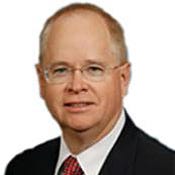Global CIO: A Framework For Developing Technical Leaders
The organizational challenges of getting the right people into these positions can be daunting. Part one of a two-part series.

No CIO can be successful without a competent technical staff. Even when system development and maintenance are outsourced, the CIO and his or her senior staff need the input of their own technical staff. But if most senior officers fail to develop high-potential directors and VPs, they do even less to develop senior technical leaders.
In a previous article I discussed five core competencies that IT leaders need to develop: people, project, financial, executive, and contract management. I'll discuss the corresponding senior technical core competencies in Part II of this column. Here, I'll discuss the organizational challenges of getting the right people into senior technical leadership positions.
The most serious challenge is having a career track sufficient to motivate and incent technical talent. Without a technical track that parallels the management track in salary and perks, top technical talent will either go into management or leave the company for more money. Far more technical people are coin-operated than want to admit it. The management and technical career paths must be structured to not incent top technical talent to move into management simply for more money.
Years ago when I was a director at American Airlines, I had a situation that still bothers me. There was an exceptionally talented IMS and DB2 engineer and resident expert on Sybase. He was clearly world class in database technology and extremely important to American's daily operation. But he wanted more money, was at the top of his pay scale, and we worked for an airline--so there wasn't any money. I counseled him that he had a few things to work on before he should consider a management position, and those were the same things required for the equivalent of a technical fellow position.
Nevertheless, he talked his way through an interview and into a management position in application development. That group had a lot of problems for which he didn't have the management experience, he made a couple of political blunders, and within a year he left the company for another job. What a loss.
I have changed some high-potential career plans by reminding the individuals that I had 150 managers and I didn't know all their names, but I had only 10 technical fellows and I knew each of them, what they were working on, their hobbies, and everything else I could because they were each so important to me.
 Global CIOs: A Site Just For You Visit InformationWeek's Global CIO -- our online community and information resource for CIOs operating in the global economy.
Global CIOs: A Site Just For You Visit InformationWeek's Global CIO -- our online community and information resource for CIOs operating in the global economy.
The second major organizational challenge is with promoting top technical talent, which quickly gets into which characteristics are most important. Every company I have worked for that had a technical career path eventually politicized the technical fellow position or used it for something other than for top technical leaders.
Among the most common mistakes is using the position as an additional salary band. At American Airlines, where the salary scale was always under pressure, the hot technologists were occasionally hired at the technical fellow level even though they didn't have the leadership skills. At other companies, I have seen top business analysts promoted to technical fellow even though they had no technical skills whatsoever. Misuse of this position diminishes its leadership and technical aspects and can damage the performance of the company.
The required leadership and technical characteristics are illustrated by the actions of one of the top technical leaders I worked with at FedEx. In 2008 we made a significant change to a major operational and customer system, adding considerable workload. Several days after the change, the system began to slow, to the point where a transaction that should have taken less then 10 milliseconds was taking more than 120--a catastrophic system failure. While everyone was blaming the increased workload and was pushing to back out the changes--a very difficult and risky fallback--our most senior technical leader jumped into the middle.
He was faced with two competing challenges: Do some workarounds to get the business back up, and identify and fix what was causing the system to crawl. Realizing the problem could be more complex than any one person or team could solve, he organized several teams in different technical areas and began collecting data.
Unknown to the application team, there had also been a major disk drive upgrade and messaging software upgrade. Complicating matters, the disk drive upgrade was our first experience with solid state drives and the engineers really didn't know how to tune them using the new tools. As the disk drive I/O rate deteriorated, the queues filled and the messaging software performance degraded.
Once our technical leader and the teams had collected all the data, they determined that the new disk drives were the problem. The manufacturer's engineers were called, the disk drives were tuned, and the situation cleared.
The problems you want your technical leaders to solve are too big for one person or one team. These leaders must see the big picture, be a quick study, organize teams, break up finger-pointing, use their broad and deep technical experience to guide the investigation, and balance immediate pressure to get the system back up at any cost while discovering and fixing the problem. My role as the senior VP over the application group was to provide political cover, "managing up" and making any decisions the technical team didn't think they could make.
My rule is, people don't get promoted for what they know; they get promoted for the class of problem they can solve.
Next up in Part II: What are the specific core competencies of technical leaders, and what do they need to learn?
Dr. Larry Tieman has been a senior VP at FedEx, a CIO, or a CTO for the last 20 years. He has worked with some of the great CIOs, including Max Hopper, Charlie Feld, and Rob Carter. He can be reached at [email protected].
Attend Enterprise 2.0 Boston to see the latest social business tools and technologies. Register with code CPBJEB03 and save $100 off conference passes or for a free expo pass. It happens June 20-23. Find out more.
About the Author
You May Also Like






